Features of growing ampelous bacopa and plant care
The natural conditions for the growth of suters, or bacopa, are the nature of the countries of South Africa. In the territory of the CIS countries, the cultivation of bacopa is considered exotic. The plant has recently been used for cultivation in the florist community. But the number of those who want to have this wonderful specimen in their collection is constantly increasing.
Distinctive features of bacopa
Bacopa is easy to recognize by the simplicity and sophistication of the inflorescences, so similar to small multi-colored stars. The flower has five petals (arranged like the rays of a five-pointed star), the color and size of which can be very diverse.
The second feature is the splendor of the greenery. Small leaves form large rounded caps. The plant grows with great speed, immediately covered with abundant lace of flowers.
Bacopa ampelous is a plant intended for growing in hanging baskets and pots. Long shoots hang down beautifully, climb a wall or spread right along the ground, covering it with a magical starry carpet.
Bacopa ampelous blooms in a wave-like manner: after a temporary extinction, it is again and again covered with bright colors. The flowering period is quite long: from the beginning of spring to almost the end of autumn.
The plant hibernates indoors, which is not heated. At this time, it does not bloom, and it needs minimal care.
Advice
In the second year, the flowering quality deteriorates. For this reason, in order to further preserve the decorative properties of bacopa, flower growers resume its cultivation, planting new shoots every spring. They are separated from the mother. By constantly renewing the plant in this way, you can achieve annual flowering, abundant and colorful. We can say that updating the bacopa is the same care for it as watering.
How to propagate and plant Bacopa?
Bacopa ampelous is bred in one of the following ways:
- reproduction using cuttings;
- use of child layers;
- germination of seeds.
It is better for beginner growers to use the first two methods, they are simpler and give quick results: ampelous bacopa will bloom in the year of planting.
But if you do not have the opportunity to get shoots or cuttings from the mother, then you will have to breed the plant using seeds. These can be purchased from a specialist store.
Let's consider each of the ways.
Cut reproduction
Occurs by rooting cuttings (shoot tops). How it's done?
- First, the cuttings must be prepared. The upper parts of young and strong shoots are cut so that there are 2-3 leaves on them, the length should be no more than 10 cm.
- The stems must be immersed in water with the addition of root growth stimulants. After a few hours, the cut tops can be planted in the prepared soil. You can also place them in a container with plain water, there the cuttings will quickly take root.
- Caring for cuttings is, first of all, in the selection of soil for planting, it must be enriched with nutrients, it must pass air well and absorb water. Sandy soil with vermiculite will do. Shoots are buried in the ground to the second leaf, it should be on the surface. In the place of formation of the first leaf, roots will grow, from the second, the upper part of the plant will form.
- For better rooting, cuttings should be covered with a film, so the soil and air will maintain the necessary moisture. From time to time, the film is opened for airing and watering.
- Put the greenhouse with seedlings in a warm place.The area should also be sufficiently lit (but not by direct sun).
- When fresh shoots begin to appear, it is advisable to pinch them so that the ampelous bacopa will bush better in the future.
- Remove the film when new leaves begin to grow. Further, the usual care is carried out, as for seedlings.
Cuttings are pruned at the end of summer, when the overgrown stems of the parent specimen are removed. Another good time is the cold period (from mid-winter to the first months of spring), at this time, adult, well-formed bacopa bushes are divided for further planned transplantation.
The planting of rooted cuttings in the chosen place of permanent growth takes place in the last month of spring. Moreover, according to experts, varieties that give a white color to flowers are most suitable for this method of reproduction. This type of bacopa tolerates the transplantation procedure well and quickly takes root in the open field. If you want to grow flowers with a different color, you will have to stimulate their cuttings with special preparations that accelerate growth, and provide them with appropriate care.
How to propagate by layering?
This method is very good as it gives the fastest results.
- It is necessary to prepare in advance a box with suitable soil (light, fertile), place it near an adult bacopa bush.
- Long stems of the plant are laid on the prepared soil and pressed tightly against it. Shoots will soon begin to sprout from close contact with the ground. Feeding from an adult, new roots grow well.
- After a short period of time, you need to carefully excavate the ground to see if the root system is sufficiently developed.
- Further, the layers are disconnected from the adult bush and planted in a permanent place (or left to grow in a box), and the new bush may already bloom by this time. Bacopa care is continued as for a separate adult specimen.
So in one season, you can get many ready-made bushes of flowering bacopa.
Seed breeding
Advice
Professionals advise combining seeds with sand before sowing. They are very small and light, and the sand will help the seeds not get lost.
To breed bacopa from seeds, you need to go through the following steps.
- Soil preparation. Choose the right composition: mix one part of peat and leaf turf, add two parts each of river sand and humus. It is advisable to disinfect the soil before sowing seeds. For this, it is placed in an oven preheated to one hundred degrees for 3-4 hours. After that, let it cool, level and tamp the surface. You can cover the soil with snow for moisture.
- Seeds are spread on the surface, slightly pressed, without sprinkling with earth. Place them under glass or film (transparent!). A miniature greenhouse is placed in a warm and bright place. Light for germination of seeds is required, so they are not buried and covered with transparent materials. For successful growth, future seedlings must be properly cared for.
- If the reading of the thermometer in the room does not fall below 20 degrees, the seeds will sprout safely after two weeks.
- Watering is necessary if the soil dries up, while it is better to use drip spraying of the soil.
- When two leaves appear after seed germination, the film is removed, and the seedlings are transplanted into a box with a step of two centimeters. Can be planted in small peat pots. Now the seedlings need regular feeding (taken fertilizer for seedlings, which is used half of the norm and is heavily bred). The room temperature is maintained (about 22 degrees).
- Fortified seedlings dive directly into the pots, where the plant will live permanently. In open areas, planting is possible after the termination of night frosts in the ground.
Tips
- When replanting plants, the roots must be completely deepened into the ground.This will give an opportunity for good growth of the root system and improve the quality of flowering.
- Bacopa is fed after a pick after a week.
- Do not oversaturate the soil with moisture or dry it out.
- Use drainage to avoid root rot.
Proper care of seedlings obtained from seeds is impossible without hardening procedures. Young seedlings must be gradually accustomed to low temperatures before planting in open soil.
Basic requirements for caring for bacopa
This plant requires fairly easy care. It tolerates fluctuations in weather conditions well. For this reason, it is most often used for outdoor breeding.
We list the main conditions for the successful cultivation of this native of exotic countries.
- Hibernates in a cold room at a temperature of 10 to 15 degrees. Bacopa can survive occasional mild frosts. In summer, a not too hot temperature (up to 25 degrees) will be comfortable for her.
- As for light, a large amount is needed. Slight shading possible, direct sunlight is inadmissible.
- It is better to choose a place for bacopa that is protected from the winds.
- How to water? In winter, very rare and few. In summer, especially in the heat, it is a lot and regularly.
- Moist air is also needed. To do this, you can spray the plant and the air around on hot days.
- The soil will need slightly acidified. The composition should make it light, porous, loose. Typically, the soil mixture includes layers of peat, sand and humus.
- It is better to choose fertilizers in liquid form; a special complex of minerals, alternating with organic, is suitable. Top dressing is applied up to once every 10-14 days.
- Pinching is done so that the bacopa grows bushy and lush. Removal of faded flowers is not required, they crumble themselves. After that, there is a temporary rest of the plant, and then a new surge of bud formation.
- It is necessary to loosen the soil carefully, since the roots of these flowers lie close to the surface.
- In order to enjoy colorful blooms every year, renew your flower. To do this, young shoots are separated from the mother and planted for separate growth.
It is not for nothing that Bacopa ampelous attracts the attention of gardeners. The use of this plant is suitable for decorating balconies and loggias, facades of country houses, creating hedges, screens and carpets creeping along the ground. Even ponds can be decorated with these wonderful colors.
Let your imagination unfold, choose varieties and colors, combine Bacopa with other plants, treat yourself to star blooming. The presence of these southern flowers will make your country house an admiration for neighbors and guests.
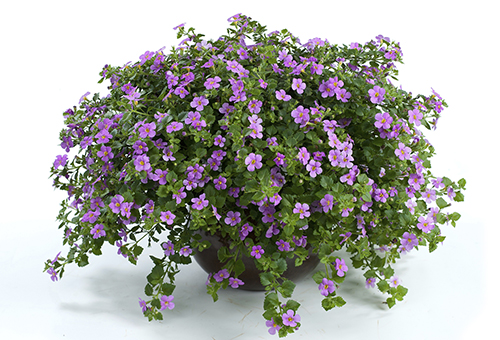
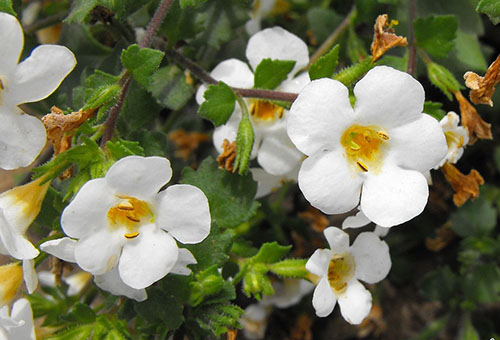
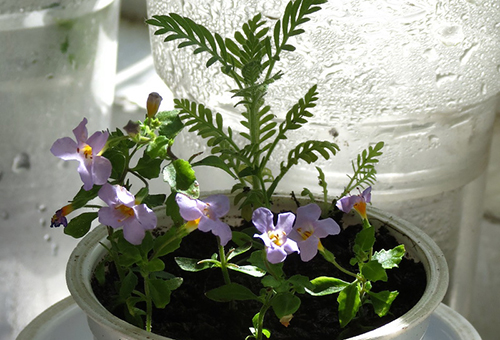
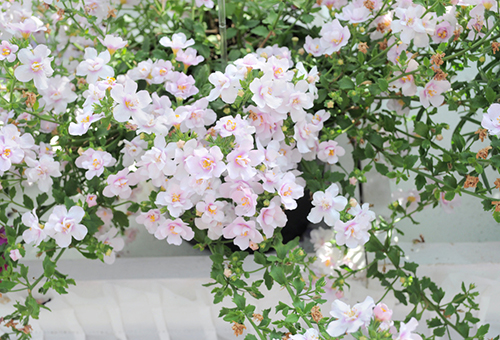
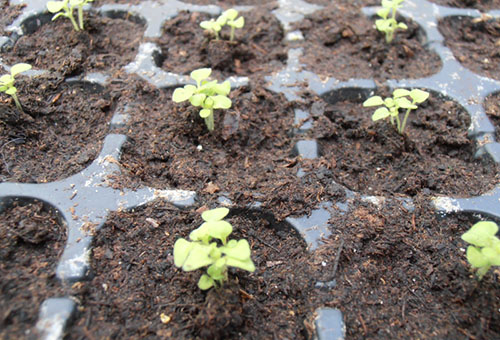
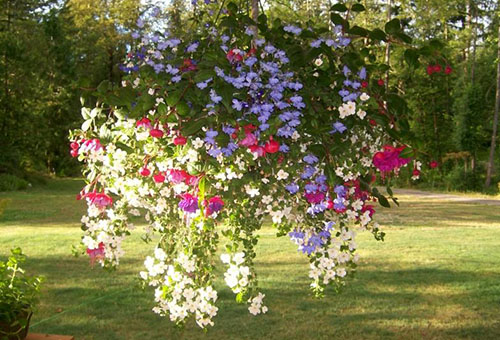
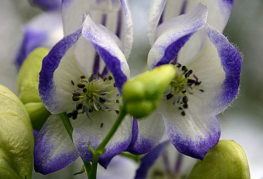

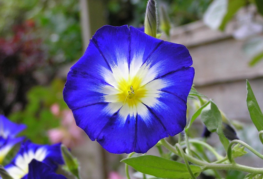

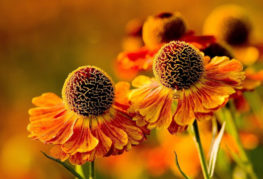
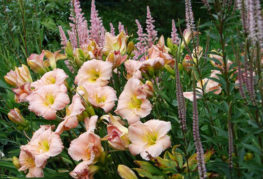
and will be published shortly.